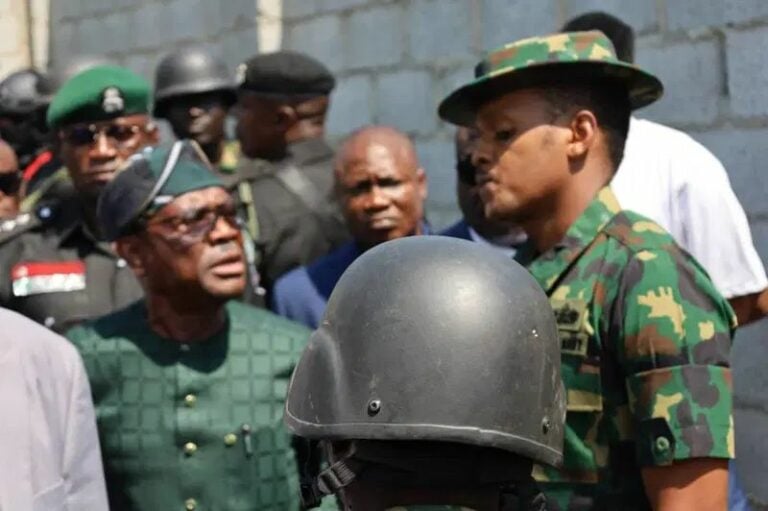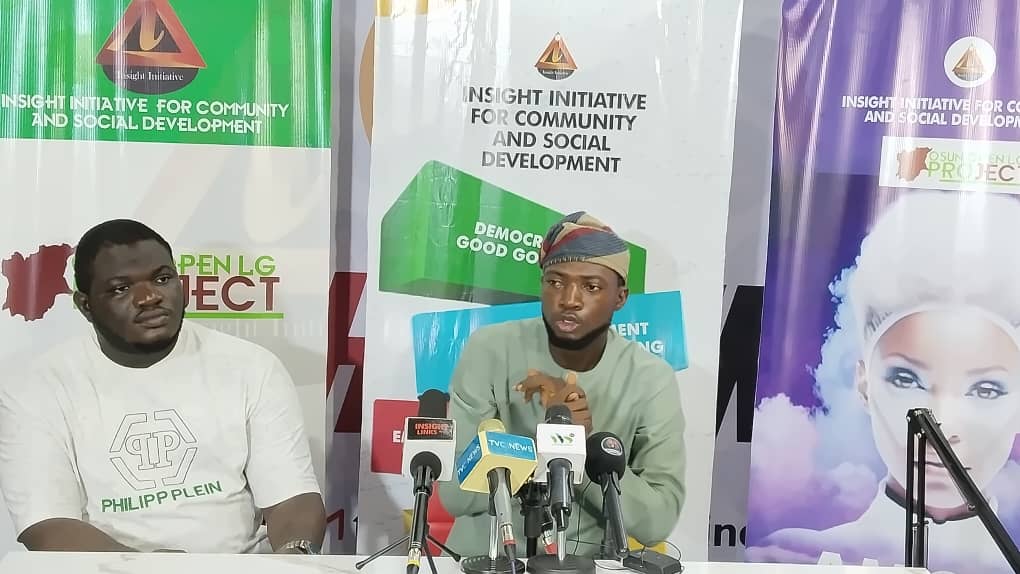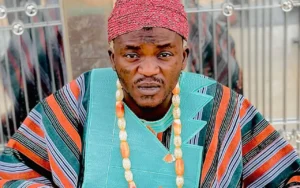All you need to know about Madagascar
[ad_1]
Madagascar is an island country lying off the southeastern coast of Africa. Madagascar, the fourth largest island in the world, after Greenland, New Guinea, and Borneo is one of the visa-free countries you can visit in the world as a Nigerian.
Discussed in this article is all you need to know about Madagascar.
1. Introduction
Madagascar, officially the Republic of Madagascar is an island country in the Indian Ocean, approximately 400 kilometres (250 miles) off the coast of East Africa across the Mozambique Channel.
Antananarivo is the capital and the largest city of Madagascar.
2. Population
According to Worldometer, the current population of Madagascar is 29,310,948 as of Thursday, October 13, 2022, based on the elaboration of the latest United Nations data.
3. Languages
According to Wikipedia, the Malagasy language of Austronesian origin, is generally spoken throughout the island. The official languages of Madagascar are Malagasy and French.
Madagascar is a Francophone country, and French is spoken among the educated population of this former French colony. French is spoken by less than a fifth of the population in Madagascar.
4. Religion
According to Britannica, some two-fifths of the population practices traditional religion, which is based upon ancestor worship.
The dead are buried in tombs and are believed to reward or punish the living.
There is a supreme being called Zanahary (the Creator) or Andriamanitra (the Fragrant One). There is also a belief in local spirits, and a complex system of taboos constrains traditional Malagasy life.
Almost half of the population is Christian, with more than one-fourth of the population adherent to Protestantism and about one-fifth to Roman Catholicism.
Conversion to Christianity has not eliminated the observation of traditional religious rites, however, particularly those involving the dead.
A community of Sunni Muslims is found in the northwest.
5. Money
The local currency of Madagascar is called the Malagasy Ariary normally abbreviated to MGA and referred to simply as Ariary.
And the current exchange rate for the USD is 3200 Ariary to 1 USD.
6. Ethnic groups/people
The Malagasy are an Austronesian ethnic group native to the island country of Madagascar.
More than nine-tenths of the population is Malagasy, which is divided into about 20 ethnic groups.
The largest and most dominant of the groups is the Merina people, who are scattered throughout the island. The name Merina (Imerina) is said to mean Elevated People, deriving from the fact that they lived on the plateau.
The second largest group is the Betsimisaraka (the Inseparable Multitude), who live generally in the east.
The third most numerous group is the Betsileo (the Invincible Multitude), who inhabit the plateau around Fianarantsoa.
Other important peoples are the Tsimihety (Those Who Do Not Cut Their Hair), the Sakalava (People of the Long Valley), the Antandroy (People of the Thorn Bush), the Tanala (People of the Forest), the Antaimoro (People of the Banks), and the Bara (a name of uncertain origin).
Smaller groups are the Antanosy (People of the Island), the Antaifasy (People of the Sand), the Sihanaka (People of the Lake), the Antakarana (People of the Rocks), and the Betanimena (People of the Red Soil), who are now largely absorbed by the Merina, the Bezanozano (Those with Many-Braided Hair), and the Mahafaly (Those Who Make Taboos).
These ethnic names do not stand for clear-cut cultural boundaries, for in many cases one group shades imperceptibly into another.
Moreover, the conventional translations are by no means reliable, and most of the names themselves are of somewhat recent origin, probably crystallized and rigidified more by the exigencies of colonial administration more than by the realities of indigenous culture. In many cases, these people represent endogamous and often non-unilinear descent groups.
7. Natural Disaster
The cyclone season in Madagascar occurs between December and April. Please monitor media reports, the RSMC Tropical Cyclone Center, and follow all official instructions.
8. Visa requirements
According to travelvisa.ng, as a Nigerian looking to visit Madagascar, you will need a visa to be granted entry into the country.
The good news is that you have different options for procuring a Malagasy visa.
The first option is to procure a visa at a Madagascar port of entry, the second option is to procure a Malagasy visa through a foreign representative of the Madagascar authorities, e.g., an embassy of Madagascar, and the third option is to get the eVisa/visa on arrival approval letter for Madagascar through their visa application website.
It is generally advised that Nigerians use the last option of the Malagasy eVisa as it is the easiest and safest method of procuring a Madagascar visa.
9. Types of Madagascar Visa
- Madagascar Tourist Visa
The Malagasy tourist visa is meant for people who are looking to visit Madagascar for a short stay.
It is expected that you are in Madagascar for vacation and tourism so the visa is non convertible. Which means that you can’t upgrade the Malagasy tourist visa.
- Duration of tourist visa
The tourist visa normally has a validity period of less than three months and you can apply for it on arrival or at the embassy office in your country.
Nigeria does not currently have a Madagascar embassy, so your options are to either apply on arrival or at the closest Madagascar embassy in Kenya.
Requirements for Malagasy Tourist visa
- Two copies of recently captured passport photographs.
- You are required to submit a duly filled and signed visa application letter.
- You are to present your purchased return flight tickets.
- You are required to present proof of hotel/accommodation reservation.
- A copy of your valid international passport with blank pages.
If you are going to Madagascar for business-related reasons, then you need to get a Malagasy business visa. Here are the requirements below:
- Evidence of onward/return travel: This is proof that confirms you are migrating to the country legally and also ensures you aren’t making an attempt to move there on a tourist visa and never leave.
- Proof of sufficient funds: This is financial documentation from your bank stating you have enough funds to meet all the required expenditures.
- The World Health Organisation (WHO) card with yellow fever vaccination will also be required within a period of six months of your arrival.
Other types of Madagascar visa
As a Nigerian, you can apply for other forms of Madagascar visas.
Other visas include student visas, work visas, and transit visas, to name a few. Make sure that you research the exact type of visa that you will need.
However, all types of visa seekers can apply for the Malagasy eVisa and upgrade to their preferred visa type when they are in Madagascar.
To obtain an eVisa, one has to apply online and wait to receive their eVisa before proceeding to Madagascar.
Kindly note that a Malagasy eVisa is normally valid for 60 days and is generally issued as a single-entry visa. This means that you can only enter Madagascar with the eVisa once.
If you need to leave Madagascar and reenter, kindly upgrade your visa when in Madagascar. Also, note that the eVisa is a form of Madagascar visa and not a type of visa on its own.
Except for Pakistanis, you are now eligible to apply online for an eVisa that is normally issued for single-entry applicants that can choose options of staying for 90 days, 60 days and 30 days. Again, you must make sure to submit an application for your eVisa three days prior to your planned travel date.
10. How To Apply for Madagascar Visa as a Nigerian
Please note that if you are applying for the Madagascar eVisa yourself, you have to apply at least three days before you plan to embark on the trip.
More than ever, it is now a lot easier to visit Madagascar than it has ever been. There is absolutely no need for you to stand in long lines to get your visa, and in the case of Nigeria, there is no need for you to travel all the way to Kenya before you can apply for the Malagasy visa.
It is now simple to apply for a visa that qualifies you to visit Madagascar. The process is simple, and you can apply in a few clicks. Just fill out the form, and wait for a few hours to receive your eVisa in your email.
11. Malagasy eVisa requirements for Nigerians
- You need a copy of your international passport with a validity of at least 6 months. Make sure that your passport has at least two blank pages as well.
- You need a debit card or a credit card with which you will pay your eVisa fee.
- You also need to have a functional email address with which you can receive your approved eVisa and communicate with the Madagascar immigration authorities
More Things To Note About the Malagasy eVisa
- Nigerians who wish to apply for the Malagasy eVisa must apply for it online.
- You must apply for your eVisa at least 7 days before you plan to travel.
- After your online application, the decision of the Malagasy authorities will communicate your status to you via your registered email.
After submitting your application, it takes the Malagasy authorities 48 to 72 hours to process your application.
After they have made a decision, you will receive communication via the email address you registered with on the immigration website of Madagascar.
If you receive the eVisa, you can then proceed to either print the eVisa or save it to your smartphone.
You will be required to present the eVisa on arrival in Madagascar, so we generally advise that you print the visa and save a copy to your phone to be used in case of any emergency.
12. Visa extension
According to btwvisas.com, to get your Visa extension, you must first have a legitimate reason to do so.
You can apply for an extension at an immigration office.
You will have to provide copies of your passport and the printed visa or visa stamp page to the immigration office and you will then be provided with an extension after the payment of the fee.
13. Minimum wage
According to minimum-wage.org, Madagascar’s minimum wage is 133,013.40 Malagasy ariary per month or 767.40 ariary per hour for non-agricultural workers; 134,920.00 ariary per month,674.60 ariary per hour for agricultural workers.
Madagascar’s minimum wage was last changed in 1-Jan-2015.
14. Average salary
According to salaryexplorer.com, a person working in Madagascar typically earns around 1,310,000 MGA per month. Salaries range from 333,000 MGA (lowest average) to 5,870,000 MGA (highest average, actual maximum salary is higher).
This is the average monthly salary including housing, transport, and other benefits. Salaries vary drastically between different careers.
15. Average travel cost
According to budgetyourtrip.com, you should plan to spend around MGA299,858 ($70) per day on your vacation in Madagascar, which is the average daily price based on the expenses of other visitors. Past travelers have spent, on average, MGA109,629 ($26) on meals for one day and MGA50,007 ($12) on local transportation.
16. Average hotel cost
The average hotel price in Madagascar for a couple is MGA251,757 ($59). So, a trip to Madagascar for two people for one week costs on average MGA4,198,008 ($987).
17. Average cost of living
According to livingcost.org, below is a table on the average cost of living in Madagascar:
| Cost of living | One person | Family of 4 |
| 💰 Total with rent | $628 | $1819 |
| 🛋️ Without rent | $318 | $983 |
| 🏨 Rent & Utilities | $310 | $836 |
| 🍽️ Food | $175 | $449 |
| 🚐 Transport | $63.6 | $189
|
18. Employment in Madagascar
According to careersinafrica.com, Madagascar is a beautiful country, but it is a developing nation, and so job opportunities are scarce.
You should obtain employment before applying for a work permit.
Also, many an expat who plan to work in Madagascar already has a position arranged through their existing employer. If you would like to work there but don’t have sponsorship from a current employer, a good option is to search for opportunities on professional networking sites, such as LinkedIn.
Expatriates are often employed in areas such as engineering, IT, and telecommunications. There are also opportunities for native English speakers to gain employment teaching English in Madagascar. Larger embassies, such as the United States Embassy, also have working opportunities from time to time.
19. Local Economy
According to internations.org, Madagascar is one of the poorest countries in the world, due in part to its political instability in recent years, and was the recipient of international aid in the early part of the 21st century. The country’s GDP is just over billion USD.
Agriculture makes the biggest contribution to the economy of Madagascar, employing approximately 70% of the workforce. Crops grown include cotton, tobacco, coffee, cacao, cinnamon, and other spices. Madagascar is also one of the world’s major suppliers of vanilla. Another major export from Madagascar is seafood, primarily shrimp.
Other key employers for people working in Madagascar include the clothing and mining industries. Mining has been established to extract nickel, ilmenite, and gemstones. More recently, oil reserves have begun to be exploited, with Madagascar Oil having oil fields at Tsimiroro and Bemolanga.
20. Work Permits for Madagascar
According to globalization-partners.com, the Malagasy government is working hard to turn Madagascar into a tourist and business destination, which means it’s easier than ever for foreign employees to get a visa in the country.
In most cases, workers get their visas within 24 hours as long as they provide all the required documents. That said, you’ll still need to worry about staying compliant and obtaining work permits for all your employees in Madagascar.
Types of Work Visas in Madagascar
Madagascar has two larger visa categories — non-immigrant visas and transformable visas.
Non-immigrant visas allow for stays up to 90 days with one to three entries. A Malagasy embassy or consulate issues transformable visas that are valid for 30 days, which allows the holder to apply for a long-term visa once they’re in Madagascar.
Most of your employees will need a transformable visa and fall under one of the many valid categories, including:
- Investors
- Executive officers or managers of companies established in the country
- Employees
- Family members in reunification
- Religious missionaries
- Retired people
- Students
- Volunteers
- Natives
- Scientists
21. Requirements to Obtain Madagascar Work Visas
The requirements for getting a work visa in Madagascar depend on your employees’ categories. However, all expats seeking employment will need a work permit.
As the employer, you can sponsor your employees’ stays in the country and arrange for their work permits. Self-employed individuals will need to apply for a work permit themselves.
In addition to a work permit delivered and signed by the Ministry of Work, your employees applying for a transformable visa will need:
- An employment contract stamped by the Ministry of Public Service, Labor Administration Reform, and Social Laws (MFPTLS)
- A work permit delivered by the MFPTLS
- A certificate of employment issued by you, the employer
- Your company’s certificate of registration issued by the Registrar of Companies (RCS)
- Your company’s Tax Identification Number (TIN)
- Your company’s statistics cards
22. Application Process
While obtaining a working visa in Madagascar is a relatively simple process, your employees will still need to go through the application process.
First, find the closest consulate and gather the documentation listed above. Each applicant must pay the visa fee, which depends on where they apply, so it’s best to check the specific embassy or consulate’s website.
After they submit the materials and pay the fee, the embassy or consulate will send your employees their Madagascar work visas. Before entering the country, it’s important to get all necessary vaccines, such as hepatitis A and typhoid.
23. Other Important Considerations
While applying for a work visa in Madagascar is relatively easy, gaining residency is a more complicated process. You’ll need to provide information about your company in addition to each employee’s paperwork.
Timing is also important, as your employees’ visas and other documents have specific expiration dates that the individual must work within.
Some of the most required documents include:
- A photo ID
- The reason for the residency request
- Notice information
- A declaration of honour with a notarised signature
- A certified copy of the applicant’s original passport and entry visa
- A criminal record from the employee’s country of origin
- A certificate of residence, and more.
24. Tourist attractions
According to touropia.com, below are the top 10 tourist centres in Madagascar:
- Ranomafana National Park
Located in the southeastern region of Madagascar near the village of Ranomafana, the Ranomafana National Park is one of the nation’s most popular parks. The eastern section of the park is the most scenic, with numerous streams splashing through densely forested hills.
The park is home to the endangered golden bamboo lemur, an animal whose diet includes bamboo shoots that contain doses of cyanide that would be lethal to other animals, yet the charming golden lemur feeds on the bamboo with no ill effects.
- Masoala National Park
Situated in the northeast of Madagascar, the Masoala National Park covers nearly 250 miles of rainforest and includes three marine parks as well. The park features ten species of lemur, including the Aye-aye, the world’s largest nocturnal primate.
The park is also home to a diverse array of birds and reptiles, including the Tomato frog, named for its bright red colour. The Tampolo, Ambodilaitry and Ifaho marine parks are ideal for snorkelling and kayaking adventures.
Encompassing around 100 miles of land in eastern Madagascar, Andasibe-Mantadia National Park is home to eleven lemur species, including the country’s largest lemur, the Indri.
Located near Madagascar’s capital city of Antananarivo, Andasibe-Mantadia is one of the easiest parks to visit. The park is split into two areas, the Mantadia National Park and the Analamazoatra Reserve. Local guides conduct 1- to 6-hour tours of either area.
- Royal Hill of Ambohimanga
Considered one of the country’s most sacred spots by the Malagasy people for 500 years, the Royal Hill of Ambohimanga is a historical village that was once home to Madagascar royalty.
The wall that surrounds the village was made in 1847 and was constructed with a mortar made of lime and egg whites. The Mahandrihono compound includes the former home of King Andrianampoinimerina, with walls made of solid rosewood, and artefacts of the island’s great king, including drums, weapons and talismans.
Ifaty is the name given to two dusty fishing villages on the coast of southwest Madagascar. Offshore, a 60-mile-long coral reef is a natural barrier to rough sea waves, creating coastal waters that are ideal for diving, snorkelling, and fishing.
The desert inland area is known for its spiny forest, where the strange-shaped baobab trees have thrived for centuries.
- Avenue of the Baobabs
The Avenue of the Baobabs is a group of trees lining the dirt road between Morondava and Belon’i Tsiribihina in western Madagascar. Its striking landscape draws tourists from around the world, making it one of the most visited locations in the region.
The Baobab trees, up to 800 years old, did not originally tower in isolation over the landscape but stood in a dense tropical forest. Over the years, the forests were cleared for agriculture, leaving only the famous baobab trees.
The small island of Nosy Be is one of Madagascar’s premier tourist spots attracting thousands of tourists from across the globe year-round.
Although Nosy Be’s beaches don’t look as picture-perfect as some other tropical beaches, they do win points for tranquility, clear turquoise water and excellent seafood restaurants serving seafood dinner on the sand.
- Tsingy de Bemaraha
The Tsingy de Bemaraha Reserve lies in the southern region of Madagascar’s largest natural reserve, Tsingy de Bemaraha Strict Nature Reserve.
The word “tsingy” refers to the pinnacles that dot the park’s limestone plateau. Located near the country’s west coast, the park features a broad expanse of mangrove forest. The park is home to seven lemur species, including the Deckens sifaka, a genus of lemur notable for its creamy white fur and black face.
- Isalo National Park
The Isalo National Park is notable for its varied terrain. Located in the central southern region of Madagascar, the park includes areas of grassland, steep canyons, and sandstone formations, all dotted by occasional pools lined by palm trees.
As in many of the country’s national parks, guides are required. Tours can be arranged to last as short as several hours or as long as several days.
The Ile Sainte Marie lies off the east coast of Madagascar. The island’s array of protected bays and inlets drew pirates to Ile Sainte Marie during the 17th and 18th centuries, and the wrecks of several pirate ships can still be viewed from the shallow waters of the Baie des Forbans.
Today, the island is one of the top tourist attractions in Madagascar. The still, clear waters of the island’s bays make ideal spots for snorkelling. Migrating humpback whales visit the island waters during summer and early fall.
25. Safety and security
According to travel.state.gov, travellers to Madagascar at this time are advised to exercise increased caution due to crime.
Civil unrest, such as protests, is common in Madagascar. Be especially vigilant in the vicinity of downtown Antananarivo, especially near government buildings, the national stadium, and historical monuments, where violent incidents have occurred.
Violent confrontations between the dahalo (criminal gangs that steal cattle) and security forces have increased in several regions of Madagascar, particularly in areas south and west of the capital.
Often precipitated by rumours or allegations of injuries to local citizens, especially in areas where there are minimal security forces, mob violence and “popular justice” continue but are rarely directed toward foreign nationals.
Street altercations and traffic accidents often quickly draw large and sometimes unruly crowds.
Exercise caution and remain calm if you find yourself in a dispute, particularly in a public place. If you feel threatened by large crowds, immediately leave the scene, seek the direct intervention of local law enforcement, and contact your country’s Embassy.
26. Crime in Madagascar
Petty crime in Madagascar is common in urban areas.
Skilled pickpockets are very active in downtown Antananarivo, and they primarily target jewelry, purses, and mobile phones.
Additionally, criminals have stolen luggage from baggage claim areas at Antananarivo’s Ivato International Airport by simply grabbing items off the conveyor belt and exiting the airport.
Serious crimes, including home invasions, armed attacks, robberies, and assaults, are common in Madagascar.
You are instructed not to use taxi-bes (minibuses which operate within urban centres) and taxi-brousses (which travel to outlying regions) due to the risk of carjacking and highway robbery. The majority of reported crimes were directed at Malagasy nationals but Westerners have likewise been targeted.
- Avoid walking alone especially after dark.
- Do not display cash and valuables.
- Drive with doors locked and windows closed
- Always carry a color photocopy of your passport and visa. Keep original documents in a secure location. Most Malagasy authorities will accept a color photo copy, but you may be requested to present the original.
Violent crime, such as armed robbery and assaults, is common in: Toamasina and Mahajanga, Nosy Be, Ankarana and Montagne d’Ambre National Parks adjacent to Diego, Isalo area surrounding Tolagnaro (Ft. Dauphin), Batteie Beach, north of Toliara (Tuléar)
Visiting remote sites: While the government has increased the number of dedicated police units at popular tourist sites, only visit remote sites in large groups guided by reputable tour operators.
Exercise caution when travelling through these designated areas due to violent highway robberies:
The general area south of the National Route (RN) 7 and RN 27 including the RN 10, RN 13, and the surrounding areas. Except the tourist area on the coastal roads between Ambovombe and Farafangana, including Fort Dauphin/Tolagnaro area.
The RN 1B, which is located to the west of Antananarivo between Tsiroanomandidy and Maintirano.
27. Health
Plague is endemic on the island, where outbreaks have resurfaced nearly every year since 1980.
You are urged to monitor public health announcements from the Ministry of Public Health and the World Health Organisation and to follow public health guidelines and recommendations.
Plague can be successfully treated with antibiotics, but it is crucial to seek medical treatment immediately, if you experience any plague signs or symptoms.
Carry prescription medication in its original packaging, along with your doctor’s prescription.
The following diseases are prevalent:
Malaria
Dengue Fever
Chikungunya
Diarrheal illness
Rabies
Tuberculosis
Plague
Polio
28. Travel and transportation
Road Conditions and Safety
Road conditions range from minimally acceptable to very poor. There are few pedestrian crosswalks and no working traffic signals.
Certain roads in Antananarivo have restrictions on tractor-trailers during the day, so trucks use the roads at night and do not always follow traffic rules.
Street lighting is limited, and it is difficult to see pedestrians, carts, and livestock.
Additional risks include excessive speeding and drivers that do not use headlights.
There are random police vehicle checkpoints throughout Madagascar, so carry photo identification (residency card, passport) in the event of police questioning.
These checkpoints are routine in nature and should not result in vehicle and/or person searches as long as valid identification and visas are shown. However, travellers have reported harassment and bribe solicitation.
If you are stopped at a checkpoint:
- Comply with the officers’ requests. Remain courteous and calm.
- Stay inside your vehicle with doors locked and open the window slightly to communicate. Turn on your interior vehicle light at night.
- Do not leave until instructed to do so.
Please note:
Local practice is to blow the horn before going around a curve, to let others know of one’s presence.
- Seatbelt use is mandatory.
- The use of cell phones while driving, even with a hands-free attachment, is illegal.
- Child safety seats are not mandatory, but highly recommended.
- You are required to wear a helmet when on a motorcycle.
Public Transportation
Public transportation is unreliable, and vehicles are poorly maintained. Rail services are extremely limited and unreliable.
Domestic and international air services operate regularly but are subject to delays and occasional breakdowns.
Air Madagascar often changes in-country flight schedules based on demand; flights that are not full may be cancelled with little or no prior warning to passengers.
Overbooking is also common. Reconfirmation of tickets prior to flight day is recommended, especially when flying from provincial airports.
ALSO READ FROM NIGERIAN TRIBUNE
[ad_2]
















Post Comment